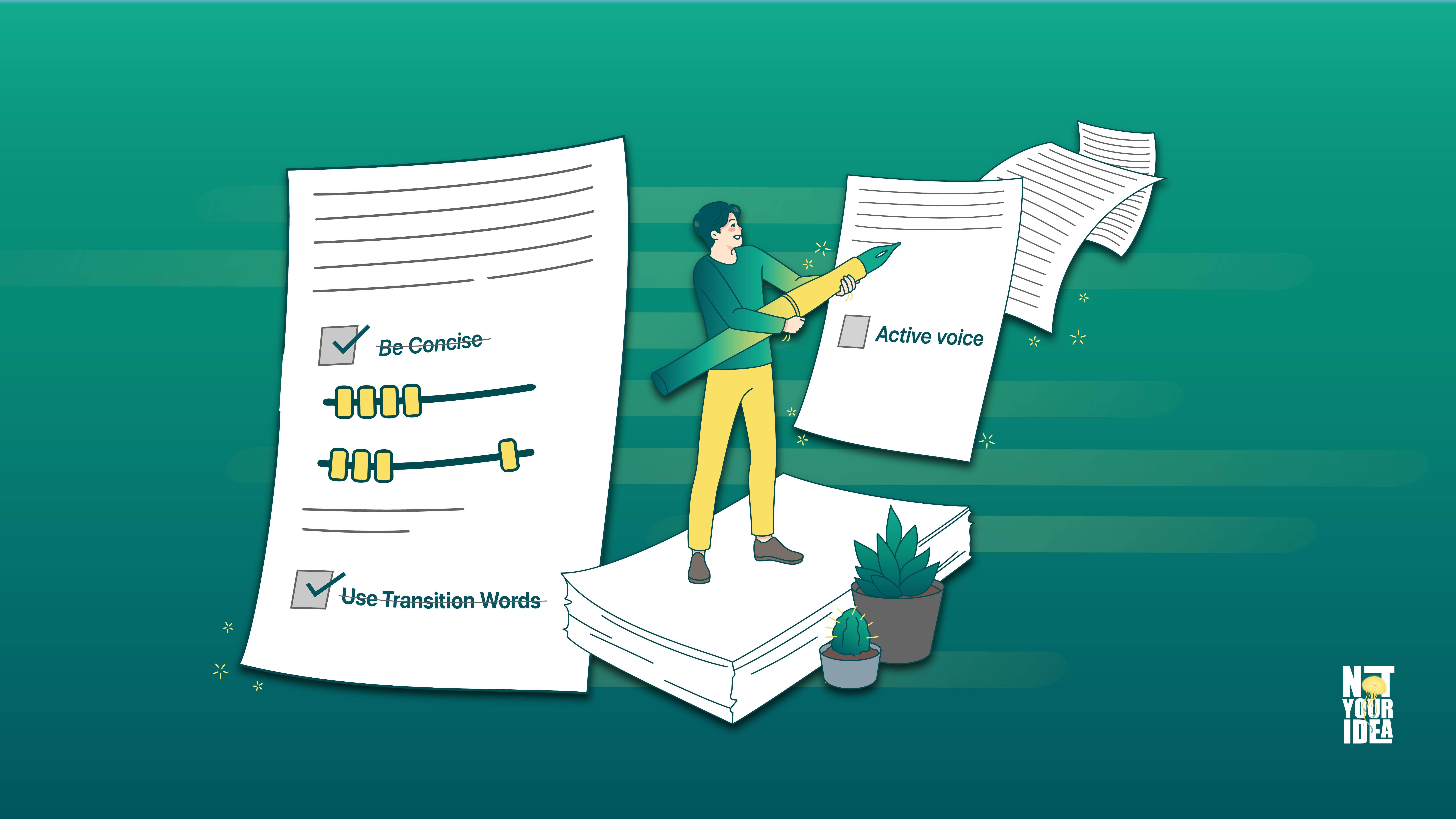No matter how great or valuable the content, it goes to waste if it isn’t easy to read and digest. Readability has been an age-old rule with content, and now, with AI-powered search engines changing how people consume information, it has become more important than ever. They tend to prefer and prioritize content that’s structured and easy to read, hinting at the importance of readability for not just user experience but also SEO and discoverability.
Why Content Readability Matters More Than Ever
Content readability isn’t just about making things “easier to read”; it’s about respecting your reader's time and cognitive load. When your content is readable, people stay longer, engage more, and are more likely to take action.
But here's what's changed: AI search tools are increasingly becoming content gatekeepers. When someone asks ChatGPT or uses Google's AI Overview for information, these systems tend to pull from and reference content that's clear, well-structured, and easy to process. Poor readability doesn't just hurt human readers anymore—it can limit your content's reach in an AI-driven search landscape.
Let's look at the difference between poor and good readability:
Poor Readability Example: “The implementation of comprehensive methodologies for optimizing user engagement metrics necessitates the utilization of sophisticated analytical frameworks that facilitate the identification of behavioral patterns and preferences, thereby enabling content creators to develop more efficacious communication strategies that resonate with their target demographic segments while simultaneously achieving predetermined conversion objectives.”
Good Readability Example: Want to boost user engagement? Start by understanding your audience's behavior. Use analytics tools to spot patterns in how people interact with your content. Then, create messages that speak directly to what they care about. This approach helps you connect with readers while hitting your conversion goals!”
See the difference? The second example delivers the same information but in a way that's actually digestible. Your readers (and AI systems) will thank you for it.
7 Proven Ways to Boost Your Content Readability
1. Understand Your Audience Well
Before you put pen to paper (figuratively speaking, of course), you MUST be clear on who you're actually writing for! This isn’t just an abstract idea; it’s the starting point for anything that is readable.
Your audience is the determining factor for absolutely everything: how much complexity your language will have; whether or not (or how) you will need to define technical terms; what examples/media are relevant to your audience; how long your sentences can be.
C-Suite executives are likely to be comfortable with complex language and industry terminology. Small business owners may need to have jargon simplified a bit, while regular readers will need proper explanations and simple language. These differences vary by industry as well, which is why it’s essential to understand your audience inside out.
Let's do a quick audience check: Can you visualize your ideal reader right now? Do you know their biggest pain points, their experience level, and how they prefer to absorb content? If not, spend some more time researching these things in greater detail.
2. Use Transition Words Like Your Reader's GPS
Transition words are often underutilized when looking to write clear content. These words allow your readers to follow your ideas smoothly, while holding their attention. With transition words, you lay a clear path for your reader by clearly communicating your ideas. Without them, your reader won't be able to follow your logic and will likely become confused. Just ensure each transition word genuinely connects your ideas, and helps readers understand the relationship between different points.
3. Be as Concise as Possible
Every word in your content should earn its place. If you can say something in five words instead of ten, do it. Your readers are busy, and AI systems favor content that gets to the point quickly.
This doesn't mean being abrupt or leaving out important details. It means being ruthless about cutting fluff, redundancy, and unnecessary complexity.
Instead of: "Due to the fact that many content creators are not aware of the importance of readability..." Write: "Many content creators don't realize how important readability is..."
Instead of: "In order to achieve better results in terms of engagement..." Write: "To boost engagement..."
Here's a simple editing trick: After writing your first draft, go through and challenge every sentence. Ask yourself, "Is there a shorter way to say this?" You'll be surprised how much tighter your writing becomes.
4. Avoid Big Words When Small Ones Work
There's a time and place for fancy word use, but rarely while writing readable content. When you use heavy language unnecessarily, you build walls between your ideas and your audience.
This is particularly important in the day and age of AI search, since AI systems prioritize accessible content. Using simpler language doesn't make you look less smart, it makes you look more empathetic to your reader's time and cognitive load. The goal isn't to dumb down your content, but to make it accessible. You can still discuss complex topics, using simple language.
5. Master the Art of Sentence Length
Here's a simple rule that'll transform your writing: Mix short and long sentences, don’t use too many of either.
Short sentences are easy to read and understand. They keep readers moving forward. But if you only use them constantly, the reader gets bored. The writing sounds janky and robotic, and your user won’t last long. On the other hand, long sentences are necessary for complex ideas but can be overwhelming too. Readers could lose track of your main point, so don’t stack too many of them in a row.
The trick is to strike a balance of the two. This ensures enough variation to keep your audience engaged, making for good readability. Aim for an average of 15-20 words per sentence. Some sentences can be longer, others shorter, but this range hits the sweet spot for readability.
Hard to read: “Content marketing success depends on understanding your audience's needs and preferences while simultaneously creating valuable, engaging material that addresses their pain points and provides actionable solutions they can implement immediately.”
Much better: “Content marketing success starts with understanding your audience. What are their needs and pain points? Create valuable material that addresses these challenges. Make sure your solutions are actionable and easy to implement.”
Breaking up that long sentence helped make the ideas clearer and easier to follow.
6. Structure It Well
In the era of AI search, good structure is even more important. AI systems use headings, lists, and other structural elements to understand and categorize your content. Well-structured content is more likely to be featured in AI-generated summaries and responses.
Use these structural elements to guide your readers:
Clear headings and subheadings: They act as signposts, helping readers navigate your content and find what they're looking for.
Short paragraphs: Aim for 2-4 sentences per paragraph in digital content. Large blocks of text look intimidating on screens.
Bullet points and numbered lists: These break up dense information and make key points easy to scan.
White space: Don't underestimate the power of breathing room. White space makes content feel less overwhelming.
7. Use Active Voice as Much as Possible
Active voice makes your writing more direct, energetic, and easier to follow. It's also typically shorter than passive voice, which aligns with our goal of being concise.
Passive voice: “Mistakes were made by the marketing team.” Active voice: “The marketing team made mistakes.”
Passive voice: “The report will be completed by our analysts.” Active voice: “Our analysts will complete the report.”
Active voice tells us who's doing what, making the action clear and immediate. Passive voice obscures the actor and makes sentences wordier. While passive voice has its place (sometimes you don't know who performed an action, or you want to emphasize the action rather than the actor), active voice should be your default choice for readable content.
The Bottom Line: Readability is Respect
At its core, improving readability is about respecting your readers. It's acknowledging that their time is valuable and their attention is precious. When you make your content easy to read, you're removing barriers between your ideas and the people who need to hear them.
And here's the bonus: In an increasingly AI-driven search landscape, readable content doesn't just serve human readers better—it also performs better with AI systems that are designed to surface clear, accessible information. Start implementing these techniques in your next piece of content. Your readers (and your analytics) will thank you for it.
FAQs
How to Make Content Readable?
To make your content more readable, you must first make sure it is written for the right audience. Be careful of the words you use; don’t use complex ones unnecessarily. Wherever possible, use transition words to make your sentences flow smoother.
What Techniques Can Be Used to Enhance Readability?
There are several techniques that can be used to enhance readability. These include writing mainly in active voice, using different headers to segregate your content, and bullet points in relevant places.
What Is Content Readability in SEO?
Content readability in SEO refers to how easily search engines can go through a page's content. The more easily search engines can go through a page, the more likely they are to rank it high.
How Can I Improve My Content Writing?
Aside from writing regularly, make sure you know exactly who you are writing for. Structure your content well and avoid jargon unless absolutely necessary. Read different kinds of content to understand the different styles and tonalities; this will help you be more versatile as well.
How Do I Make My Content Better?
Ensure sentence length is varied, with more short sentences, write in an active voice, and be as concise as possible. Use white space accordingly between paragraphs and break down complex ideas into bullet points to make them easier to understand.



